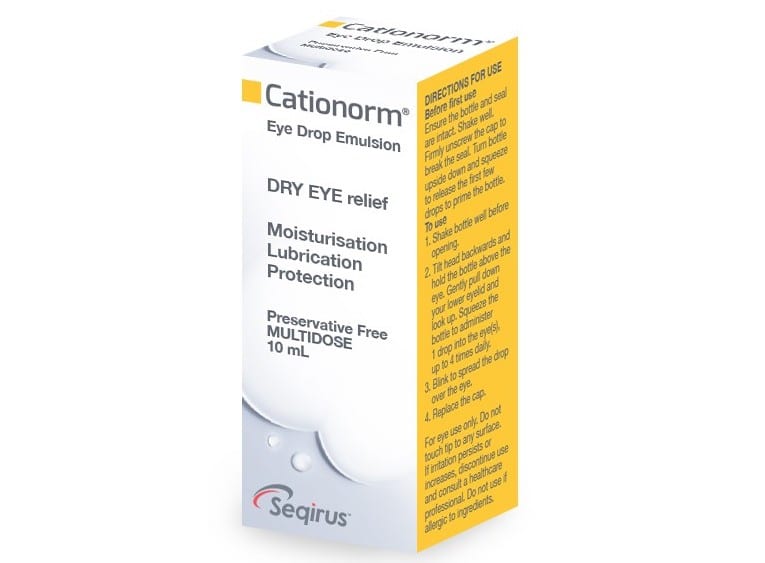Pharmaceutical company Seqirus has announced that preservative-free dry eye therapy Cationorm is now accessible via the Pharmaceutical Benefits Scheme (PBS) in Australia.
The new treatment is a hydrating and lubricating emulsion, delivered in a 10 mL multidose bottle, which is designed to protect the ocular surface, reducing discomfort and irritation due to persistent dry eye.
Listed on the PBS from 1 August, the therapy is in-licensed in Australia by Seqirus, which describes itself as is a leading provider of essential vaccines and pharmaceuticals. Seqirus is a subsidiary of the Melbourne-based biotechnology company CSL that was contracted to manufacture the AstraZeneca COVID-19 vaccine.

According to a company statement, Cationorm treats dry eye disease (DED) caused by prolonged use of contact lenses or environmental conditions. It adopts cationic nanoemulsion technology, through interactions between the positively charged oil nanodroplets and the negatively charged ocular surface.
It was originally approved by the Therapeutic Goods Administration in July 2019 and is administered as one drop, up to four-times daily. It is suitable for use with contact lenses.
Mr Jason Teh, optometrist at In2Eyes and director of Dry Eye Group – a dedicated service established by a team of Melbourne optometrists – said the availability of an additional, preservative-free treatment for DED was a welcome step for clinicians and patients.
“It’s estimated that tens of millions of people worldwide are affected by DED, with the prevalence involving symptoms with or without clinical signs, ranging from approximately 5% to 50%,” he said.
“Importantly, patients often present with a lack of correlation between signs and symptoms. In fact, several studies have demonstrated less than 60% of those showing objective evidence of DED, are symptomatic.”
He continued: “While the full impact of DED on a patient’s quality of life (QoL) is not easily quantifiable, the economic burden and impact of DED on vision, QoL and work productivity, is considerable.”
According to Seqirus, dry eye management is complicated due to its multifactorial aetiology. In severe cases, and in the latter stages, conjunctival scarring, filamentary keratitis, epithelial defects, and corneal ulceration may also occur. If managed inappropriately, or left untreated, DED can lead to keratitis and ultimately vision loss.
The company also cited studies suggesting contact lens wearers are more than twice (2.38) as likely to be diagnosed, compared with non-contact lens wearers.
And more recently, there had been a reported marked increase in dry eye symptoms among regular mask wearers, including among those who had never previously experienced dry eye, due to the COVID-19 pandemic. Moreover, the surge in virtual remote learning and working from home to minimise the spread of COVID-19, has driven a substantial increase in the use of digital media.
“Decreased blinking during extended visual tasks, such as computer use, watching television and prolonged reading, are some external factors known to precipitate and exacerbate dry eye,” Teh said.
“Furthermore, in the younger population, DED is growing more common due to the surge in digital screen time. Indoor environmental factors, including air conditioning, ceiling fans and forced air heating systems, can all lower humidity, and exacerbate tear evaporation, causing dry eye symptoms.”
Dr Jonathan Anderson, Seqirus head of medical affairs for Asia Pacific, said the company was committed to pursuing innovative eyecare therapies.
“DED represents the most common reason for seeking medical eyecare, with one in four patients who visit ophthalmic clinics reporting symptoms of the disease,” he said.
“The reimbursement of an additional treatment option for DED represents a significant milestone for Seqirus in addressing a common and chronic disease, afflicting many Australians.”
More reading
Standing up for dry eye patients
Dry eye treatment in Australia
Aussie ingenuity spearheads dry eye advancements: a five-part series




